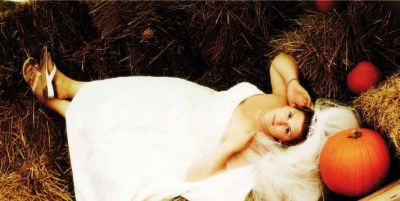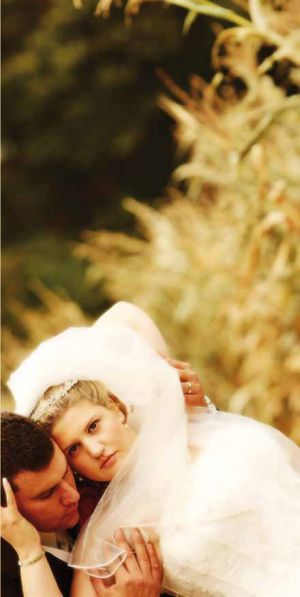articles/Weddings/plussizebride-page1
How To Photograph The Plus Size Bride - part 1 of 1 2
Published 01/04/2010

By Douglas Gordon
One of my favourite wedding shoots ever was a plus size bride, she was a great model, with lovely features, and her images were among the best I have ever done She loved them, and so did I. So not being a super-model is fine, most people aren't!
One of the things I am constantly asked is what do you do when your subject is overweight? I notice that photographers in general tend to get discouraged when their subjects are overweight. They think that this will limit what they can do. I couldn't disagree more. I am asked, 'do you lay the bride on the ground?' The answer again is 'yes'. 'Do you do the sexy poses?' The answer again is 'yes'. I don't change a thing in terms of what I shoot. I do, however, change my approach.
There are a few simple keys to slimming out the plus size subject and these are some of the key technical elements that have worked for me:

Camera Viewpoint, Try to mostly stay at a higher camera angle whenever possible. For 2/3 or 3/4 shots slightly above eye level
Camera lens, slightly wider than normally used for full length shots. I tend to bring my subject to the forefront of an image with a wide lens to separate them from the background while making the background very prominent.
Subject, I tend the pose the subject at more of angle to the camera. Placing a lot the excess weight on the back hip, pushing it to the backside.
Think about tucking the back shoulder of the female under the grooms armpit. This will start the minimizing process. Then you will need to open up the front shoulder of both subjects to stretch the bodies out and push excess weight to the backside
The last posing tip is the lean. By leaning the subject forward you will stretch them out and tighten them. It removes double chins.
The fourth key element is the bride's veil. Use this to cover her arms. Remember most brides are wearing sleeveless , strapless gowns, which exposes skin. That will make the subject larger especially the subject's arms. Cover the skin with the veil.
2/3 shots and head-and-shoulder shots usually work better than standing, full length shots. In order to make the full lengths work you need to create a v shape between the subjects
Groups shots (formals and family): use children in front; use sitting arrangements; avoid straight line arrangements; avoid wide angle lenses for group shots, but rather favour good arrangement first, albeit a tighter and a more curved or more tiered arrangement, than normally used for the shot.
If the male is wearing a coat, if possible leave it buttoned, one button only, and use his hands in front.
Use props (natural settings) extensively. This will include the groom's hands to cover the bride's arms. Use the veil, Use the bouquet to cover the arms.
Lighting is crucial. Keep it as soft and natural as possible. Harsh lighting and harsh shadow will not be flattering. Keep it simple, available light whenever possible.
You are currently on page 1
1st Published 01/04/2010
last update 09/12/2022 14:58:00
More Weddings Articles
There are 0 days to get ready for The Society of Photographers Convention and Trade Show at The Novotel London West, Hammersmith ...
which starts on Wednesday 15th January 2025





